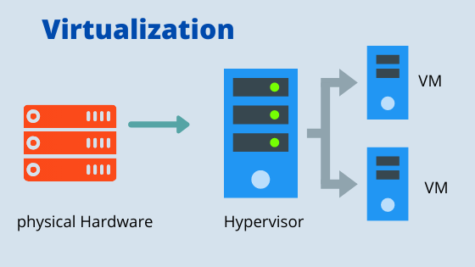When I was initially starting to take more interest in Virtualization technology, I would read about it, watch its videos and would often come across terms which sounded similar, but were actually different. I would understand the concept and working, but these similarity in terms always confused me. So then finally, today I want to write this post as a reference for myself and others like me who are just wanting to see all these terms together and be able to differentiate one from another. The Virtualization terms below are not exhaustive, but an initial starting point for those interested in this field.
VMware Terms
VMDK– The extension name of hard disk created for Virtual machine in VMware.
VMFS 6– File system formatted in ESXi 6.5, 6.7 and 7. Similar to NTFS, FAT in Windows and Ext3 in Linux
VMFS 5– File system created in ESXi 6
DATASTORE– The storage that is connected to ESXi is Datastore. Each VM uses some space from Datastore known as VMDK.
THIN DISK– If the total allocated space on VMDK is 50GB, but if the used space is only 20GB, then the size of the disk will be 20GB and it will keep expanding as more data is added.
THICK DISK– If the total allocated space on VMDK is 50GB, and if the used space is only 20GB, then the size of the disk will be 50GB irrespective of the lesser used space.
VMX– The VMX file is the configuration of the VM in VMware
vNIC– Assigned to virtual machine for communication
vmNIC– Physical adaptor Uplink vmKernal port used for management, vmotion etc.
Common VMware adaptor type-
- E1000
- VMXNET3
VMware Fusion– desktop virtualization software for macOS enables you to run other OSes on your Mac. Fusion is installed on Mac, on top of which you can install other VMs of either Mac, Windows or Linux
VMware Workstation-Workstation enables you to run virtual desktops with a different OS, including macOS on Windows or Linux. Workstation is installed on your Windows or Linux machines, on top of which you can install other VM of either Mac, Windows or Linux
Other Virtualization platforms
VDI– Virtual Disk Image- It is the virtual disk format for Oracle VirtualBox
VHD & VHDX -Virtual Hard disk format for Microsoft’s virtualization products- Hyper V
VMCX– The VMCX file is the configuration file of the VM in Hyper V
There are many many more Virtualization terms, however this list will help avoid some ambiguity for those just getting started.
